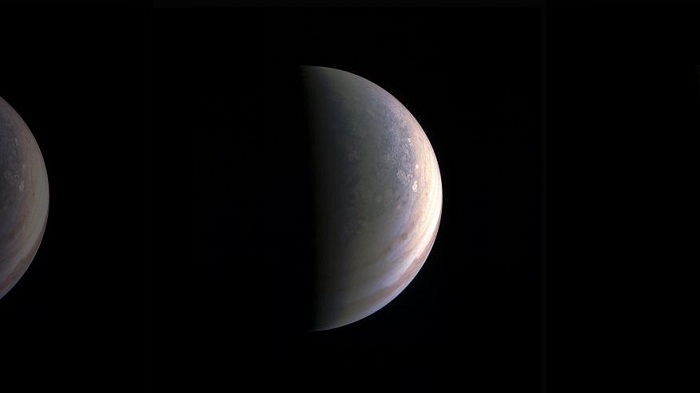Juno Jupiter probe`s final engine burn delayed by glitch

"Telemetry indicates that two helium check valves that play an important role in the firing of the spacecraft`s main engine did not operate as expected during a command sequence that was initiated yesterday," Juno project manager Rick Nybakken, of NASA`s Jet Propulsion Laboratory in Pasadena, California, said in a statement Friday (Oct. 14).
"The valves should have opened in a few seconds, but it took several minutes," Nybakken added. "We need to better understand this issue before moving forward with a burn of the main engine."
The earliest that the engine burn could now occur is during Juno`s next close Jupiter flyby, which will take place on Dec. 11, NASA officials said.
The Juno team had planned to observe Jupiter with a limited number of the probe`s nine science instruments during Wednesday`s close approach. But, as a result of the valve issue, all of the instruments will be turned on during the upcoming flyby.
Even if Juno never makes it into that 14-day orbit, the spacecraft will still be able to gather good data about Jupiter, mission team members said.
"It is important to note that the orbital period does not affect the quality of the science that takes place during one of Juno`s close flybys of Jupiter," Juno principal investigator Scott Bolton, of the Southwest Research Institute in San Antonio, said in the same statement. "The mission is very flexible that way. The data we collected during our first flyby on Aug. 27 was a revelation, and I fully anticipate a similar result from Juno`s Oct. 19 flyby."
The $1.1 billion Juno mission launched in August 2011 and arrived in orbit around Jupiter on July 4 of this year. The spacecraft is collecting data about the huge planet`s composition, structure, gravity and magnetic fields, in order to help scientists better understand how Jupiter, and the solar system overall, formed and evolved.
The original mission plan called for Juno to shift into the 14-day orbit this month, then circle Jupiter more than 30 times before ending its mission in February 2018.















































